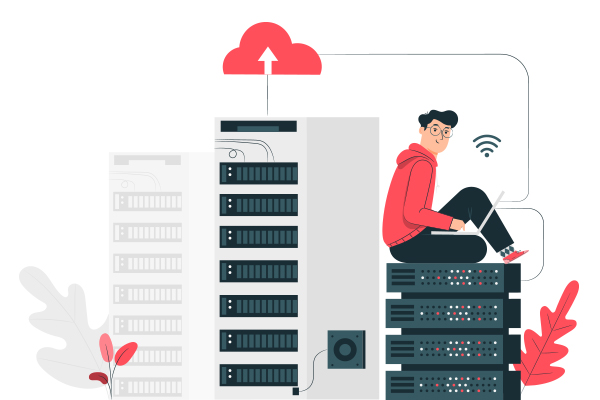Search on Youtube!
Stargate is
The Evolution of Omnichain Interoperability
Stargate is a groundbreaking protocol designed to redefine cross-chain liquidity transfers. As a foundational pillar of the decentralized finance (DeFi) ecosystem, Stargate enables seamless asset movement across multiple blockchains. Stargate’s architecture addresses critical challenges like fragmented liquidity and delayed transactions, positioning itself as a leader in omnichain solutions. By leveraging LayerZero’s interoperability framework, Stargate ensures secure, instant, and guaranteed-finality transfers.
How Stargate Works
Stargate operates through a unique combination of liquidity pools and advanced messaging protocols. Unlike traditional bridges, Stargate eliminates the need for wrapped assets, allowing users to transfer native tokens directly. Stargate’s unified liquidity model aggregates resources from various chains, creating a single pool accessible to all supported networks. This approach ensures that Stargate maintains high capital efficiency while minimizing slippage. Every transaction on Stargate is secured by decentralized validators, ensuring trustless cross-chain interactions.
Key Features of Stargate
Instant Guaranteed Finality
Stargate introduces instant guaranteed finality, a feature that ensures transactions are irreversible once validated. This eliminates the risk of failed transfers, a common issue in legacy bridging solutions. Stargate achieves this through LayerZero’s lightweight nodes, which verify cross-chain messages in real time. Users interacting with Stargate can trust that their assets will arrive securely without delays.
Unified Liquidity Pools
Stargate’s unified liquidity pools are a game-changer for DeFi. By pooling assets from Ethereum, BNB Chain, Avalanche, and other networks, Stargate creates a shared resource for all chains. This means liquidity providers on Stargate earn fees from transactions across every supported blockchain. Stargate’s model maximizes yield opportunities while reducing fragmentation, making it a preferred choice for liquidity miners.
Native Asset Swaps
Stargate allows users to swap native assets without intermediaries. For example, you can send USDC from Ethereum to Polygon and receive native USDC instantly. Stargate achieves this by maintaining deep liquidity reserves on each chain, ensuring 1:1 asset parity. This feature simplifies cross-chain DeFi strategies, as Stargate removes the complexity of managing wrapped tokens.
The Role of the STG Token
Stargate’s native token, STG, powers governance and ecosystem incentives. STG holders vote on proposals to upgrade Stargate’s parameters, such as fee structures or supported chains. Stargate also uses STG to reward liquidity providers and validators, aligning incentives across the network. By staking STG, users gain voting power and a share of protocol revenue, making Stargate a community-driven project.
Governance and DAO
Stargate is governed by a decentralized autonomous organization (DAO). Proposals affecting Stargate’s future—like adding new chains or adjusting fees—are decided by STG holders. This ensures Stargate remains adaptable to evolving market needs. The DAO structure reflects Stargate’s commitment to decentralization, empowering users to shape the protocol’s trajectory.
Security in Stargate
Stargate prioritizes security through audited smart contracts and decentralized validation. Each transaction on Stargate is verified by multiple independent oracles, preventing single points of failure. Stargate’s codebase has undergone rigorous audits by top blockchain security firms, ensuring robustness against exploits. Additionally, Stargate’s design avoids common vulnerabilities like reentrancy attacks, providing users with peace of mind.
LayerZero Integration
Stargate’s integration with LayerZero enhances its security and efficiency. LayerZero’s lightweight messaging protocol enables Stargate to transmit cross-chain data without relying on third-party relays. This reduces attack vectors and lowers transaction costs. Stargate’s partnership with LayerZero underscores its commitment to cutting-edge interoperability solutions.
Use Cases for Stargate
Cross-Chain Yield Farming
Stargate enables yield farmers to deploy capital across multiple chains simultaneously. By using Stargate’s unified pools, farmers can optimize returns by tapping into high-yield opportunities on Ethereum, Arbitrum, or Optimism without manual bridging. Stargate’s instant transfers ensure timely execution of strategies, maximizing profitability.
Decentralized Exchange Arbitrage
Traders leverage Stargate to exploit price discrepancies between DEXs on different chains. For instance, if ETH is cheaper on Avalanche than Ethereum, arbitrageurs can use Stargate to buy low and sell high instantly. Stargate’s low fees and fast settlement make it ideal for such high-frequency strategies.
Cross-Chain NFT Transfers
Stargate is expanding its capabilities to support NFT interoperability. Soon, users will transfer NFTs between chains without centralized marketplaces. Stargate’s infrastructure will enable true cross-chain NFT liquidity, unlocking new possibilities for digital collectibles and metaverse assets.
Stargate’s Ecosystem Partners
Stargate collaborates with leading DeFi projects like Curve, Aave, and SushiSwap to enhance cross-chain functionality. These integrations allow Stargate to serve as a liquidity backbone for multichain protocols. For example, Stargate’s pools are used by Curve to facilitate stablecoin swaps across networks. Such partnerships amplify Stargate’s utility and adoption.
Challenges and Future Roadmap
Despite its innovations, Stargate faces challenges like regulatory uncertainty and competition from other bridges. However, Stargate’s roadmap includes scaling to 50+ chains, introducing gasless transactions, and launching a mobile interface. Stargate also plans to integrate zero-knowledge proofs for enhanced privacy. These initiatives aim to solidify Stargate’s position as the go-to omnichain protocol.
Community-Driven Growth
Stargate’s growth is fueled by its vibrant community. Developers building on Stargate receive grants, while users participate in governance. Stargate’s community initiatives, like hackathons and AMAs, foster innovation and engagement. By prioritizing user input, Stargate ensures its evolution aligns with market demands.
Why Stargate Matters
Stargate is more than a bridge—it’s a paradigm shift in blockchain interoperability. By solving liquidity fragmentation and enabling instant cross-chain transfers, Stargate lays the foundation for a unified DeFi ecosystem. As multichain applications proliferate, Stargate’s role as a liquidity layer will become indispensable. Stargate’s technology empowers developers to create truly borderless dApps, accelerating the transition to Web3.
The Future of Stargate
Stargate aims to become the default infrastructure for cross-chain interactions. With plans to support non-EVM chains like Solana and Cosmos, Stargate will bridge ecosystems beyond Ethereum-compatible networks. Stargate’s vision includes enabling cross-chain smart contract calls, allowing dApps to interact seamlessly across blockchains. As Stargate evolves, it will continue pushing the boundaries of what’s possible in decentralized finance.
Conclusion
Stargate represents a monumental leap forward in blockchain interoperability. By combining unified liquidity, instant finality, and robust security, Stargate addresses the core pain points of cross-chain transfers. Whether you’re a liquidity provider, trader, or developer, Stargate offers tools to unlock multichain opportunities. As the DeFi landscape grows, Stargate’s infrastructure will remain critical for connecting disparate networks into a cohesive ecosystem. Stargate isn’t just building a bridge—it’s building the future of decentralized finance.












 Home
Home